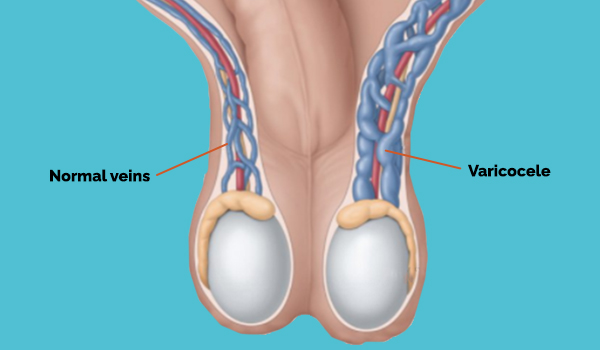
The two most common and effective methods to overcome infertility are IVF (artificial insemination) and IUI (intrauterine insemination). But before deciding on treatment with such methods of PMA, you should consult your doctor, as well as find out all possible information about IVF and IUI – who is suitable, features of the procedures, success rate, IUI Treatment Cost in Pakistan, and other important points.
WHAT IS THIS?
It consists of the introduction of sperm into the uterus at the time of ovulation. Therefore, egg fertilization occurs in the fallopian tube, “in vivo” fertilization unlike “in vitro” which occurs in the laboratory.
It can be with a spontaneous ovulatory cycle or with light stimulation using low doses of hormones (FSH), always under gynecological supervision.
Pregnancy rates per insemination cycle are between 15 and 20%. It depends on many factors, including the woman’s age, the number of mature follicles, the integrity of both tubes, the quality of the sperm, etc.
Usually, it is recommended to inseminate 3-4 times (3-4 months of treatment) and, in the absence of pregnancy, to resort to other medically assisted reproduction techniques.
Intrauterine insemination in detail
During natural conception, sperm must pass from the vagina to the cervix, then to the uterus and fallopian tubes. With IUI, sperm are “washed” and concentrated and are also placed directly into the uterus, bringing them closer to the egg.
This process may increase the chances of pregnancy in some couples who have had difficulty getting pregnant.
IUI is most often used in these scenarios:
- Unexplained infertility
- Mild endometriosis
- Problems with your cervix or cervical mucus.
- Low sperm count.
- Decreased sperm motility.
- Problems with ejaculation or erection
A single woman wishing to conceive a child.
A couple wishing to avoid the transmission of a genetic defect from the male partner to the child.
IUI is a relatively painless and non-invasive procedure. IUI is sometimes done in what is called the “natural cycle,” meaning no medication is given. The woman ovulates naturally and the sperm are placed in the doctor’s office at the time of ovulation.
IUI may also be associated with ovarian stimulation. Medications such as clomiphene citrate (Clomid), hCG (human chorionic gonadotropin), and FSH (follicle-stimulating hormone) can be used to encourage the ovaries to mature and release one or more eggs. Ovulation with more than one egg generally increases the chances of pregnancy.
Each medical facility and doctor has specific instructions for the IUI procedure. After your initial consultation, when you and your doctor have determined that IUI is the best course of action, a typical schedule may include the following:
- You may need to visit the office several times during your period for blood tests, ultrasounds, and medication instructions.
- If medications are prescribed, you will usually start taking them during your period.
- You will likely have another ultrasound and possibly blood tests about a week after you start taking the medication.
- Based on your test results, your doctor will determine when you ovulate, and you and your partner will return to the clinic. This usually happens 10 to 16 days after starting treatment.
- Your male partner will provide a sperm sample on the day of the procedure, or the donor sperm will be thawed.
- The sperm will immediately be transported to a laboratory where they will be “washed”. This is a process in which seminal fluid and other debris are removed so that the sperm is highly concentrated and unlikely to irritate the uterus.
- IUI is quick, usually painless, and does not require anesthesia.
- You will lie on an examination table and your doctor will use a speculum (the same tool used for the Pap test) to gently open the vagina and view the cervix.
- The sperm will pass through the cervix and be placed into the uterus using a long, very thin tube.
- You will lie on the examination table for 10 to 30 minutes after the insemination.
- Some practices carry out the second insemination the following day.
- Some practices also prescribe progesterone to be taken after the procedure and during the early stages of pregnancy if this is obtained, while others do not.
What are the risks?
There is a small risk of infection after the IUI procedure. If medications are used to induce ovulation, there is a risk of multiple pregnancies. Because fertility drugs increase the likelihood that more than one egg will be released, they also increase the likelihood of multiple pregnancies. Your doctor will try to balance the amount and type of medication, as well as blood tests and ultrasounds, to avoid too many eggs being released at once.
What is the success rate?
Every couple responds differently to IUI, and it can be difficult to predict its success. Several factors influence the result, including
- Age
- The underlying infertility diagnosis.
- Other underlying fertility issues
Pregnancy rates after IUI vary depending on why you need fertility treatment. IUI success rates tend to decrease in women over 40 and in women who have not become pregnant after three IUI cycles. You should discuss your expected success rate with your fertility specialist to see if this option is right for you.
Who is IUI useful for?
IUI is a relatively non-invasive and less expensive fertility treatment than more invasive and expensive treatments such as in vitro fertilization IVF Treatment Pakistan. In some cases, couples may begin with IUI before progressing to IVF if necessary.
IUI can be performed using the male partner’s sperm or donor sperm.
Recommended Article: SMD Screen | LED Screen Configuration











